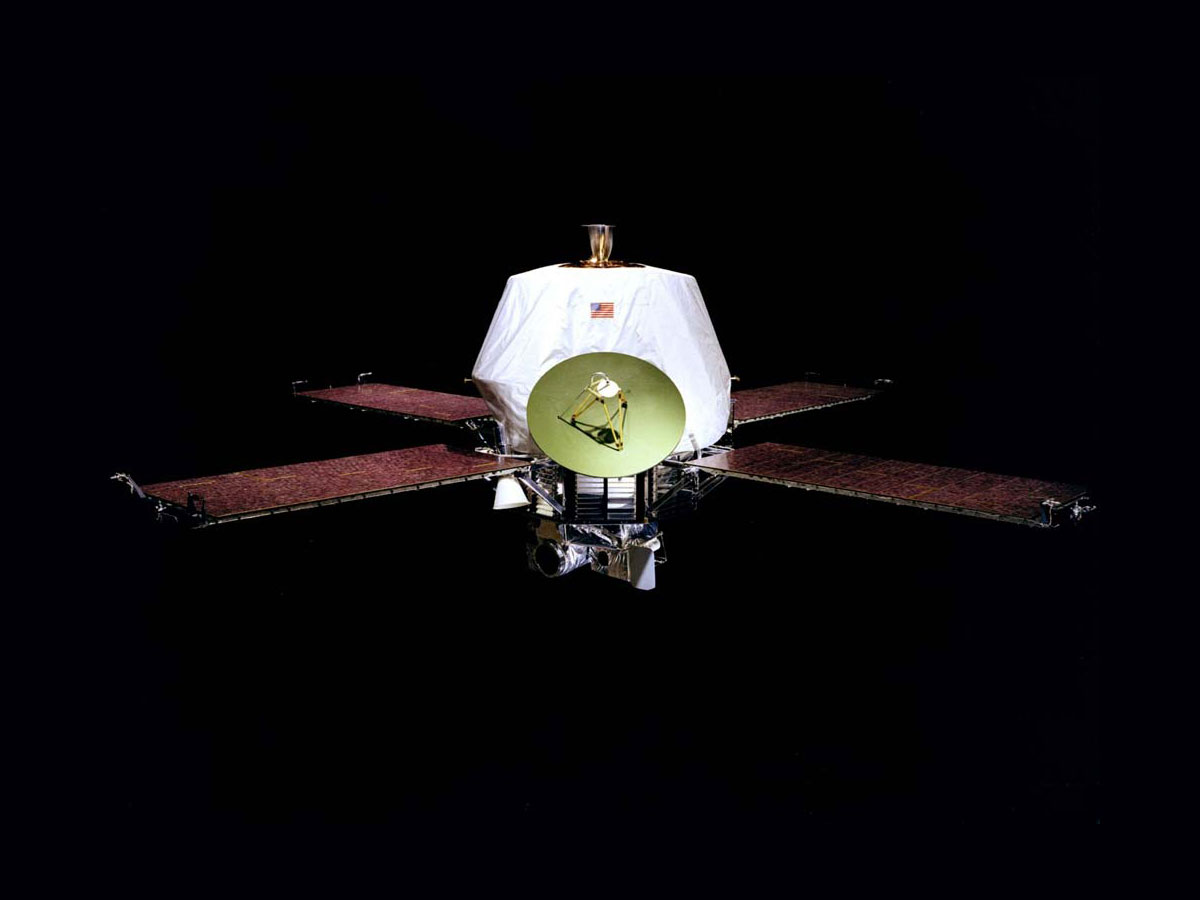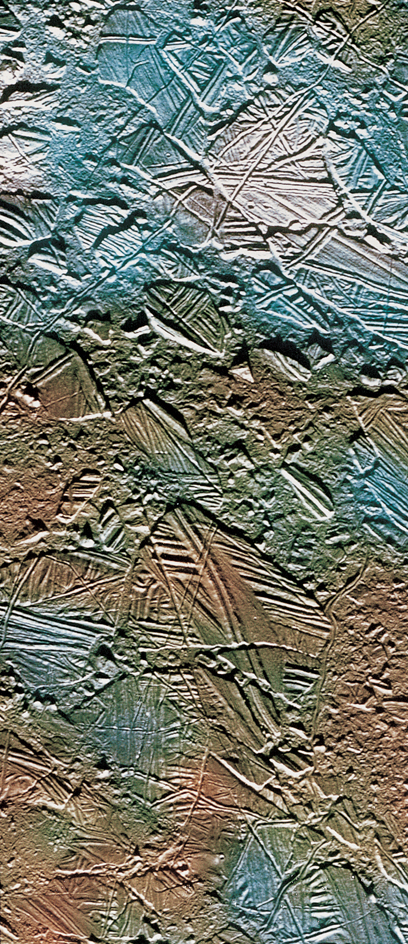Alien life is life that is not from Earth. It is also called extraterrestrial life. Scientists have not yet found convincing evidence for the existence of alien life. However, many think that life may exist elsewhere in our own galaxy, the Milky Way, or beyond. The search for and study of life beyond Earth is called astrobiology. This article deals with (1) early ideas about aliens; (2) the Fermi paradox and (3) the Drake equation—two important ideas in the study of alien life; and (4) the search for intelligent life beyond Earth.

Early ideas about aliens
People have wondered about alien life since ancient times. The ancient Greek philosopher Aristotle denied the existence of alien life. However, followers of the ancient Greek philosophers Epicurus and Pythagoras embraced the idea that life might exist outside of Earth. The Pythagorean philosopher Philolaus (around 470-385 B.C.) suggested that aliens lived on the moon. Three hundred years later, the Roman poet and philosopher Lucretius wrote the poem De Rerum Natura (On the Nature of Things). In this poem, he wrote:
You must confess that there are other worlds with other races Of people and other kinds of animals in other places.

In 1543, the Polish astronomer Nicolaus Copernicus proposed that Earth was not the center of the universe—as was popularly believed at the time—but that Earth and the other planets revolved around the sun. Copernicus’s hypothesis led scholars to consider the possibility that the other planets might also have beings living on them. The Italian philosopher Giordano Bruno suggested in 1584 that the stars are suns with orbiting planets of their own. He thought that some of those planets or their moons might be inhabited. In 1781, the German philosopher Immanuel Kant wrote in his Critique of Pure Reason that he would wager “that there are also inhabitants of other worlds.”
In the 1800’s, the French astronomer Camille Flammarion wrote about what he believed to be alien life on Mars and elsewhere. Flammarion’s writings inspired the American astronomer Percival Lowell to establish the Lowell Observatory in Arizona. Lowell spent decades studying Mars from his observatory. He became convinced that features on the surface of Mars were great canals built to transfer water from the Martian polar caps to desert regions near the planet’s equator. In popular books and lectures, Lowell speculated that Martians could have built the canals in a desperate attempt to save their dying planet from drought. Most other astronomers of Lowell’s time observed little or no evidence of Martian canals. Later observations showed that the canals did not exist. However, Lowell’s ideas about Martians gripped the public’s imagination. 
The popularity of Lowell’s writings inspired a wave of science fiction about life on Mars and beyond. In 1912, the American author Edgar Rice Burroughs published a magazine serial Under the Moons of Mars. It was later published in book form in 1917 as A Princess of Mars and was the first in a series of novels set on the planet. Characters in the influential series struggle to save a dying Mars, which they call Barsoom. In The Martian Chronicles (1950), the American author Ray Bradbury imagined a future in which humans nearly exterminate Martians. Movies in the 1950’s often depicted Martians as bug-eyed monsters. Loading the player...
Mars surface
The Fermi paradox
In 1950, the Italian-born American physicist Enrico Fermi posed the famous question Where is everybody? Fermi’s question referred to a particular paradox, an idea that seems to contradict itself. It can be stated, If alien civilizations are likely to exist, why do humans see no evidence of them? The Milky Way existed for nearly 10 billion years before Earth formed. Some scientists think that allows plenty of time for alien life and civilization to arise and become advanced enough to make their presence known, perhaps by attempting to communicate with human beings. If this is the case, Fermi wondered, then why have scientists not seen evidence of such alien civilizations?

Scholars have proposed several solutions to Fermi’s paradox. One possibility is that intelligent life is actually so rare that human beings are the first technological civilization to arise in the entire galaxy. Another answer is that intelligent civilizations might be too short-lived to develop interstellar travel (travel among the stars) or to develop other technologies that would increase the likelihood of their detection. Some scholars think advanced aliens might hide their existence to avoid affecting our more primitive culture. This idea is sometimes called the zoo hypothesis, in reference to the human observation of animals in a zoo. Some have also suggested that alien technology may be so strange or so advanced that human beings would have difficulty recognizing its evidence.
The Drake equation
The strongest argument for the existence of alien life is the enormous size of the universe. Even if only one-billionth of all planets were likely to develop life, there might still be hundreds of inhabited planets in the Milky Way alone—and the Milky Way is just one of at least billions of galaxies in the universe.
In 1961, the American astronomer Frank Drake wrote what became known as the Drake equation. The equation shows how the potential number of detectable alien civilizations depends on a number of specific factors. At the time, astronomers were unable to estimate most of the factors presented in the Drake equation. Today, many of the factors are better known. The Drake equation was not meant to provide a precise prediction of the number of detectable alien civilizations in existence. Rather, the various factors provide an important framework for thinking about the possibility of alien life.
In the Drake equation, the letter N represents the number of existing technological civilizations in our galaxy that might transmit detectable signals. The equation is often written as follows:
N = R f p N e f L f I f c L
The letters after N are variables (unknown numbers). Each one represents a factor that affects the number N. These seven variable numbers are multiplied together to get the number N. The variables have the following meanings:
R is the average rate at which stars form that are suitable for the development of life.
f p is the fraction of those stars that have planets orbiting them.
N e is the number of planets, per star, that are suitable for life.
f L is the fraction of suitable planets on which life appears.
f I is the fraction of life-bearing planets on which intelligence evolves.
f c is the fraction of intelligent civilizations that develop technology revealing their presence.
L is the length of time during which such civilizations broadcast their presence.
Formation of stars suitable for life.
The first variable of the Drake equation, R, is the rate at which stars suitable for hosting life on their planets are formed in our galaxy. The most massive stars burn through their fuel quickly, lasting only for a few million years. Scientists think that is not enough time for intelligent life to evolve. Therefore, the equation should only include less massive stars that, like the sun, can shine for the billions of years necessary for evolution to produce intelligent life. Observations suggest that about 1.5 to 3 such stars form in our galaxy each year.

Number of planets.
The Drake equation takes into account how many of those stars have planets orbiting them. When Drake wrote the equation, this fraction, f p, was unknown. Some astronomers suspected planets might be common. Others argued that planet formation might be so rare that of the hundreds of billions of stars in our galaxy, the sun might be the only one to have planets. Given this uncertainty, f p might have held virtually any value between 0 and 100 percent. The first extrasolar planets—that is, planets outside our solar system—were discovered in the 1990’s. Since then, the United States Kepler spacecraft has discovered thousands of stars that have planets. Astronomers now think that the vast majority of suitable stars may have one or more planets, placing the value of f p perhaps close to 100 percent. Loading the player...
Kepler spacecraft
Number of planets suitable for life.
Scientists do not yet know the value of N e, the number of planets per star that are suitable for life. It is hard to predict what conditions are required for the development of life when there is only one example available to study—life on Earth. All known life requires water and a source of energy, such as sunlight or geothermal energy (energy from the planet’s internal heat). Scientists use what they know about the conditions in which life first developed on Earth to make guesses regarding the conditions seen on other planets.
When the Mariner 4 spacecraft flew past Mars in 1965, the images it transmitted back to Earth showed a cratered surface that looked like the lifeless surface of the moon. The popular view that there was life on Mars diminished with the spread of these pictures. Ground-based observations also showed that the Martian atmosphere was too thin and cold to allow the existence of liquid water—which is necessary for life as we know it—on the planet’s surface. In 1971, however, the Mariner 9 spacecraft entered orbit around Mars and transmitted more detailed images than those captured by Mariner 4. The new images showed what appeared to be ancient, dry riverbeds, suggesting that Mars may have once had a warmer, denser atmosphere that would have allowed the presence of liquid water on the planet’s surface. The United States National Aeronautics and Space Administration (NASA) sent the two Viking spacecraft in 1976 to land on Mars and search for alien life. The landers found no strong evidence for life on Mars. Nevertheless, later missions to Mars found additional evidence that Mars once had seas of liquid water and warmer, wetter conditions under which life might once have arisen. 
Another suggestion that Mars might have once been home to alien life came in 1996, when scientists at NASA’s Johnson Space Center announced they had found signs of fossilized microscopic life in a meteorite that came from Mars. The meteorite exhibited a combination of features that could each have been caused by microscopic Martian life. However, the scientists did not find conclusive (certain) evidence of life. The question of whether the meteorite truly contained fossilized life is still debated.

Earth and Mars are not the only worlds in the solar system that may have had conditions suitable for life. Jupiter’s moons Europa and Ganymede have oceans of liquid water beneath their icy surfaces. These oceans appear to be some of the likelier places in the solar system to look for alien life. Scientists also think Saturn’s moon Titan is a possible location for life, because it has an atmospheric pressure similar to that of Earth and a surface partially covered in lakes. However, the temperature at Titan is so low that the lakes are of liquid methane and ethane, instead of water. The Cassini spacecraft reached Titan in 2004 and deployed its Huygens lander to the surface in 2005. The atmosphere of Titan was found to be rich in organic molecules. Organic molecules are molecules including one or more atoms of carbon, often in long chains. All known life is based on organic molecules. The organic molecules found on Titan are similar to those thought to have led to the formation of life on Earth billions of years ago. However, scientists do not know whether the chemical reactions necessary for the development of life could take place in liquid methane and ethane, instead of water. They also do not know of a source of energy to power those reactions in the frigid environment of Titan.

Further, conditions in our solar system could be unusual. The average number of planets per solar system that are suitable for life could be far less than what is found in our own solar system. Astronomers have found, however, that many of the chemicals needed for life are as common elsewhere in the galaxy as they are in our solar system. More than 100 different organic molecules have been detected in space. Some have been found in meteorites, but most have been detected by radio telescopes observing the molecular clouds from which new stars form.

No one knows how many planets orbiting each star might be suitable for life, making it difficult to estimate the value of N e in the Drake equation. But many astronomers suspect that the conditions that gave rise to life on Earth may not be rare in the universe, meaning that the number of planets per star that are suitable for life might be significantly greater than 0.
Number of planets on which life arises.
The next variable in the Drake equation is f L, the fraction of life-suitable planets on which life actually would appear. This variable is another that scientists cannot really estimate. Many of the processes leading to the creation of organic compounds necessary for life seem likely to be common outside of Earth. In 1952, two American chemists—Stanley L. Miller and Harold C. Urey—conducted a famous experiment regarding the origins of life on Earth. The Miller-Urey experiment involved filling flasks with substances then thought to have made up Earth’s early atmosphere—water, methane, ammonia, and hydrogen. When the flasks were subjected to electrical sparks, simulating energy supplied by lightning, many organic molecules necessary to produce life formed in the flasks. Organic molecules are common, and they can react with each other to produce more complicated molecules. However, it is unclear which molecules first developed the ability to reproduce themselves, leading to the development of life on Earth.
Number of planets on which intelligence evolves.
When people think about aliens, they usually imagine intelligent beings, rather than simple organisms resembling bacteria or even plants. It may be possible for life on a planet to evolve without leading to the development of intelligence. The next variable in the Drake equation, f I, represents the fraction of life-bearing planets on which intelligence would evolve. The only known example of such an evolution is that which occurred on Earth.
Life on Earth appeared relatively quickly after the planet’s formation. The sun and Earth formed about 4.5 billion years ago, but the young Earth had a mostly molten crust and underwent constant bombardment by debris left over from the formation of the solar system. Conditions on Earth became less harsh by about 500 million years after Earth’s formation. Bacteria appeared more than 3 1/2 billion years ago. However, the earliest human ancestors did not show signs of intelligence until about 5 million years ago. The long delay from the origin of life to the origin of intelligence suggests that intelligent life may be difficult to develop and may thus be much rarer than life in general. This evidence suggests that f I may be a small number.
Number of technological civilizations.
The next factor in the Drake equation, f c, addresses how many intelligent alien life forms would develop technology that could reveal their presence to people on Earth. Many scientists suspect that the chances of an intelligent civilization eventually developing radio transmitters or other technology that would make their presence known is fairly high.
Lifetime of technological civilizations.
The variable L has to do with the length of time an intelligent civilization might continue to survive and transmit evidence of its existence. If this time is short, we should see evidence of fewer civilizations at any one time. Civilizations may not be able to last forever. Human beings have not existed long enough to allow people to imagine what would be needed for a civilization to persist for billions of years. Human civilization seems to have come close to destroying itself through nuclear war, climate change, and other dangers. This evidence leads some scholars to suspect that the lifetime of civilizations may be relatively short. If this is the case, then it may be that alien civilizations could have died out long before human civilization arose.
Answers to the overall Drake equation
vary drastically. Some astronomers believe the chance that there are any living and detectable alien civilizations is low. Others think that there is likely to be extraterrestrial intelligence elsewhere in the universe. Astronomers continue to study the factors involved in the Drake equation.
Search for extraterrestrial intelligence
Due to the enormous difficulty of traveling the vast distances that separate star systems, astronomers think the most likely way of contacting an alien civilization may be via radio. As early as 1901, Nikola Tesla, an American engineer from Austria-Hungary, argued that odd radio static he had detected might have originated from Mars. But because he offered no observations or experiments to back up his claim, scientists of the day were not convinced. In the early 1930’s, the American engineer Karl Jansky became the first person to detect radio waves whose source was outside the solar system. Despite his discovery, most astronomers at the time did not pay attention to the new science of radio astronomy, the study of radio waves given off by celestial objects.

Advances in radio technology during World War II (1939-1945) led to the post-war development of radio astronomy as an active field of research. Soon after, astronomers began to build large radio telescopes. The competition for time on the limited number of radio telescopes meant that astronomers generally observed natural radio emissions, which were easily detectable, rather than searching for signs of possible alien life.
In 1984, the SETI Institute was established in California. The purpose of the organization is to determine if alien life exists. The term SETI stands for the Search for Extraterrestrial Intelligence. So far, no signals from another civilization have been detected. However, there is no way of knowing the most likely time or frequency to observe. All of SETI’s observations to date have been based on searches of only a small part of the sky and have covered only a small fraction of the possible frequencies that might be observed.
The James Webb Space Telescope, a space-based observatory, was launched in 2021. The telescope studies the atmospheres of exoplanets to search for the chemical signatures of life.
